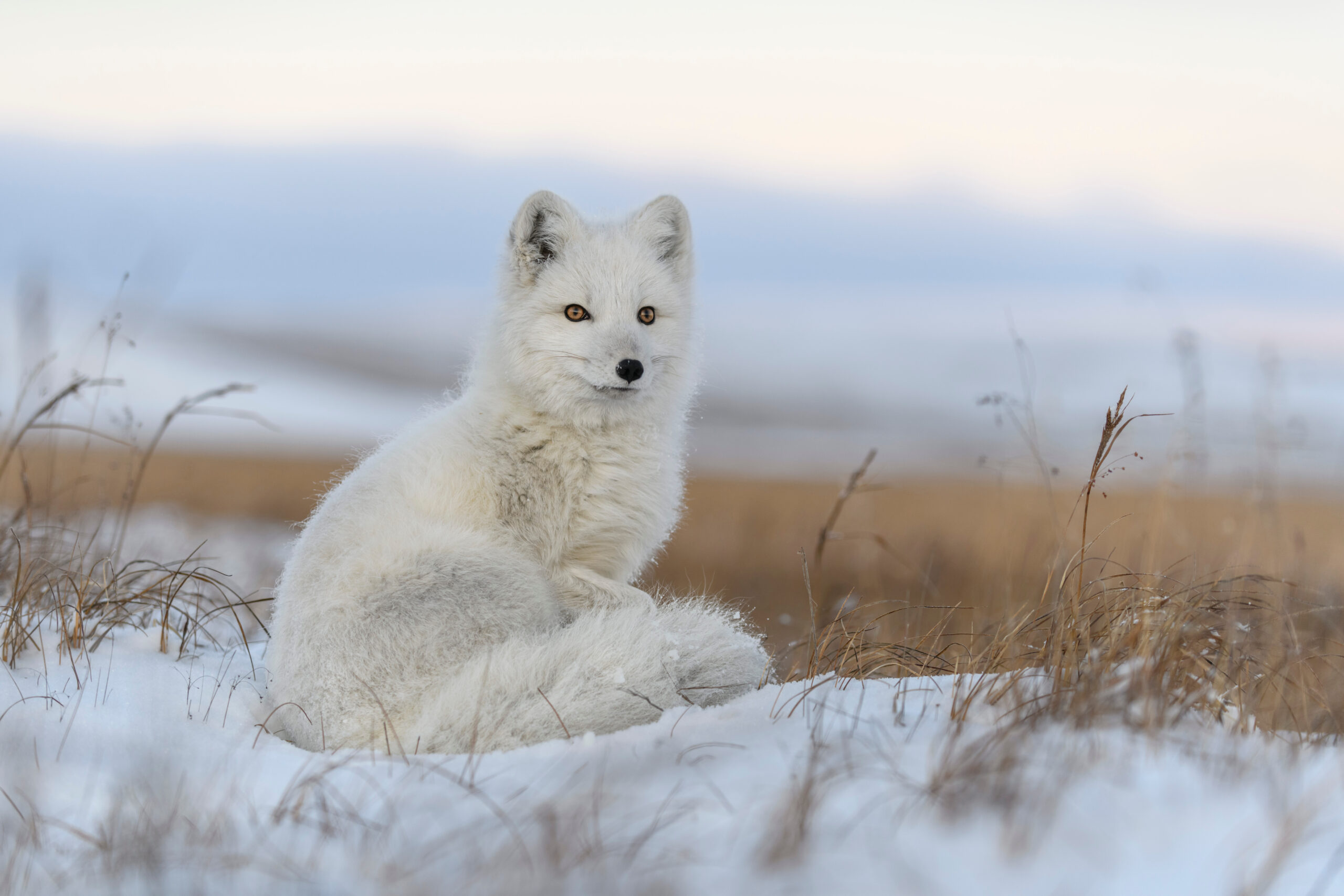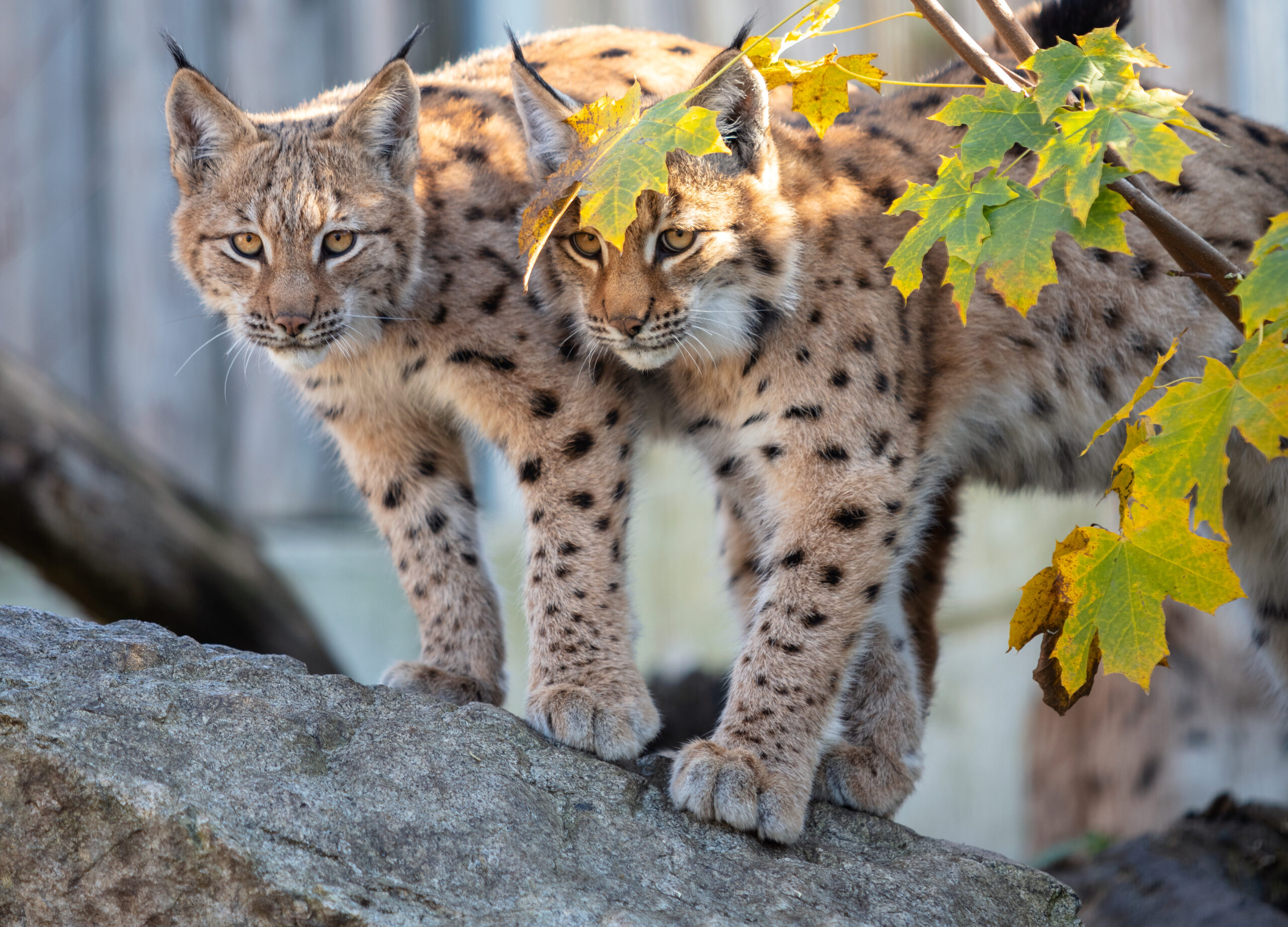Lynx and Arctic Fox of Alaska
Expansive terrain and an abundance of natural resources offer the space and environment necessary for more specialized species to thrive. The Arctic Fox and Lynx are two species that resemble the animals we see and observe in the lower region of the northern continent. These species are both specialized and adapted to the arctic regions of Alaska and Canada.
Arctic Fox
Vulpes lagopus
Description
The Arctic Fox is often noted for its unique fur color. They experience a species variance of having white and blue color phases. The blue color occurs more often in the southern island regions, while the white fur color occurss primarily in the northern regions. Full-grown arctic foxes weigh six to ten pounds and reach approximately 45 inches in length. This includes their tail, which is typically around 15 inches long.
These foxes appear stocky and sleek with their dense winter fur coats, short legs, body, and petite ears. These foxes are due to molt, so they have a duration during the early summer months of having a brown coat or have brown spotting. This kind of molting happens predominantly with the white color fur foxes. The blue fur can have charcoal hues to deep blues year-round.

Location and Food Source
The Arctic fox enjoys residing in treeless coastal areas like the Aleutian Islands in the southern areas and can be found as far north as Utqiagvik (Point Barrow on the Northern Slope). They thrive in spaces where they can have ample food sources of voles and lemmings. When residing in the coastal regions they hunt small-cliff dwelling birds like puffins and murres. This fox is a skilled and agile hunter.
Arctic foxes raise their young in dens. This way, they can stash food nearby while caring for their young. Foxes have also been known to navigate over sea ice to get food and can move long distances over the ice. (Alaskan Nature)

Lynx
Lynx canadensis
Description
Although the lynx is large, it is considered a small cat. It is similar in appearance to the bobcat and is characterized by its long legs, longer tufts of hair on its ears, and blackened tail tip. Lynx have fur coats with spotting that varies within grey colors.
This small cat typically weighs between 18 and 30 pounds. Males are typically larger than females. Its feet cover a large amount of surface area and can act as a sort of snowshoe to navigate the deep winter snowfall.

Location and Food Source
Unlike the Arctic Fox, the lynx is absent from some southernmost islands, such as the Aleutian Island chain and the Prince William Sound region. They enjoy forested terrains like spruce and hardwood forests. Lynx mainly thrive in tree spaces that go through fire cycles. These forests have a lush, vegetative environment where the small prey they primarily hunt thrive.
Lynx are known to travel about one to five miles each day unless food source is scarce. Snowshoe hare is one of the primary food sources for this mammal. Otherwise, the lynx has been known to hunt small rodents, and ground birds, and even some more medium-size prey. They have been documented hunting Dahl Sheep and sometimes even foxes. They are known for their ambushing techniques when it comes to hunting prey.
This small cat can even climb trees. However, they typically save that energy to escape other predators, like wolves. And a bit surprisingly, the lynx is the only cat native to Alaska. (AK Wildlife)

Mirroring Species
With the Arctic fox and the lynx, we can observe some of the smaller species in both the canine and cat families. Each species has experienced its own lows and highs in population, typically due to disruption in food sources or overhunting. Since those trends, both animals have seen numbers recover and stabilize.
Having a variety of predators in the Arctic regions is just as important as in any other area. The balance between prey and predators is essential to healthy environments. These mammals are to be respected for their beauty and stealth alone. So be mindful, kind, and observant if you get the chance to observe either of these majestic mammals.






